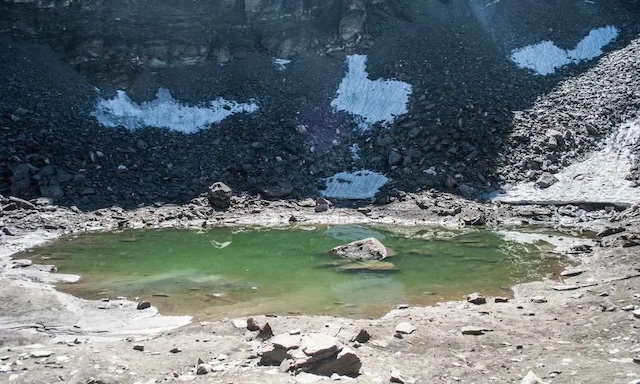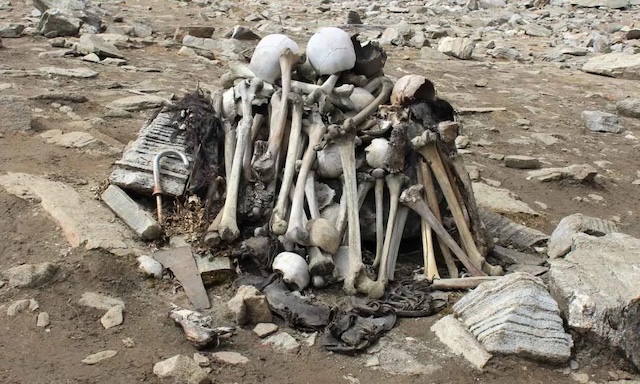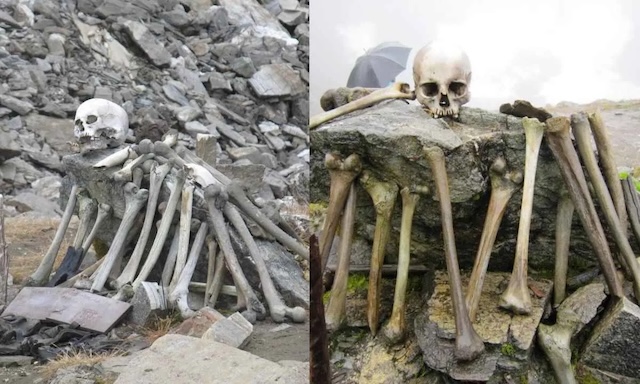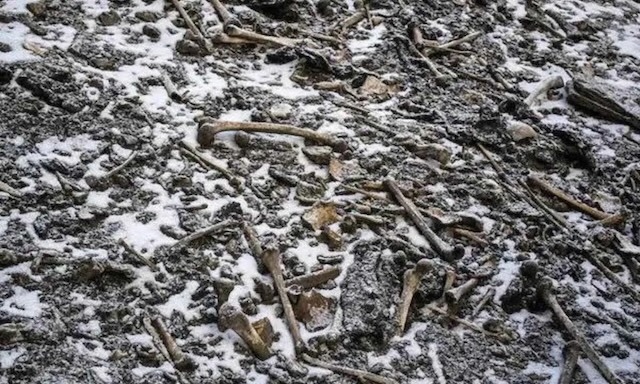Hidden deep in the majestic Himalayas, surrounded by breathtaking snow-covered peaks, lies Roopkund, a small lake with a chilling secret. Known as Skeleton Lake, it has drawn attention for decades due to the macabre sight of hundreds of human skeletons piled up at its edges. When the ice covering the lake melts, these skeletal remains, some dating back over a thousand years, emerge in an eerie display. The mystery of who these people were and how they met their tragic end has intrigued scientists and explorers alike.
First Discovery of Skeleton Lake
In 1942, a forest ranger named Hari Kishan Madhwal stumbled upon this mysterious site while patrolling the area. To his astonishment, he found human skeletons scattered around the frozen lake. News of the discovery sparked numerous speculations and theories. Was it a mass burial site? Were these soldiers who perished in battle or victims of a deadly epidemic? Roopkund, nestled in the Indian state of Uttarakhand, quickly became a focus of curiosity and investigation.
Initially, many speculated that the skeletons could be the remains of soldiers who had died during wartime, or perhaps victims of a devastating epidemic that swept through the region centuries ago. Some even theorized that the skeletons were the remnants of a failed invasion or a forgotten battle lost in the history of the Himalayas. However, modern science would eventually challenge these early assumptions.

Scientific Investigations Unveil a Tragic Tale
As technology advanced, so did the study of Roopkund’s skeletal remains. Through a combination of DNA sequencing, radiocarbon dating, and forensic analysis, scientists were able to paint a more complete picture. The remains were found to belong to at least two distinct groups of people: one of South Asian origin, and another with Mediterranean ancestry, dating back to 800 CE and 1800 CE. This discovery ruled out the idea of a single catastrophic event or epidemic. The lake was likely the final resting place of multiple groups of travelers who met their untimely demise in the unforgiving environment of the Himalayas.

Artifacts and Clues from a Bygone Era
Along with the bones, researchers uncovered a variety of artifacts, such as jewelry, wooden objects, and pieces of clothing. These relics offered valuable insights into the lives of the deceased and suggested that these people were not soldiers but pilgrims. The items were diverse in design, reflecting the cultural backgrounds of the travelers. These pilgrims might have been on a sacred journey, moving through the harsh mountain terrain to reach a spiritual destination before being overtaken by disaster.

The Tale of King Jasdhaval and the Pilgrims
Local folklore provides a tantalizing clue to the mystery of Roopkund. The legend tells of King Jasdhaval of Kanauj, who led a pilgrimage into the Himalayas with his entourage, including his pregnant queen. Their journey, however, ended in catastrophe. The king, along with his followers, is said to have been caught in a sudden and violent hailstorm. The sheer intensity of the storm left no survivors, and their remains were eventually engulfed by the lake.
Fatal Hailstorm: The Most Likely Cause of Death
Scientific investigations seem to align with this legend. Many of the skeletons show evidence of blunt force trauma to the skulls and shoulders, consistent with injuries inflicted by hailstones. In fact, researchers believe that the cause of death for most of the individuals at Roopkund was likely the result of a freak hailstorm, where massive hailstones, some larger than a cricket ball, rained down upon the travelers, leaving them defenseless and fatally injured. The survivors were few, and the lake soon became a natural grave for these unfortunate souls.

Conclusion: The Legacy of Roopkund’s Skeletons
Roopkund, or Skeleton Lake, remains one of the most mysterious archaeological and natural sites in the world. It stands as a chilling reminder of the power of nature and the fragility of human life. Though the exact details of how these people ended up at the bottom of a Himalayan lake may never be fully known, their skeletal remains tell a story of tragedy, culture, and survival. Today, the site is not only a popular trekking destination but also a somber place where history, myth, and science converge. The lake continues to guard its secrets, offering tantalizing glimpses into the past and reminding us of the enduring mysteries of the ancient world.
